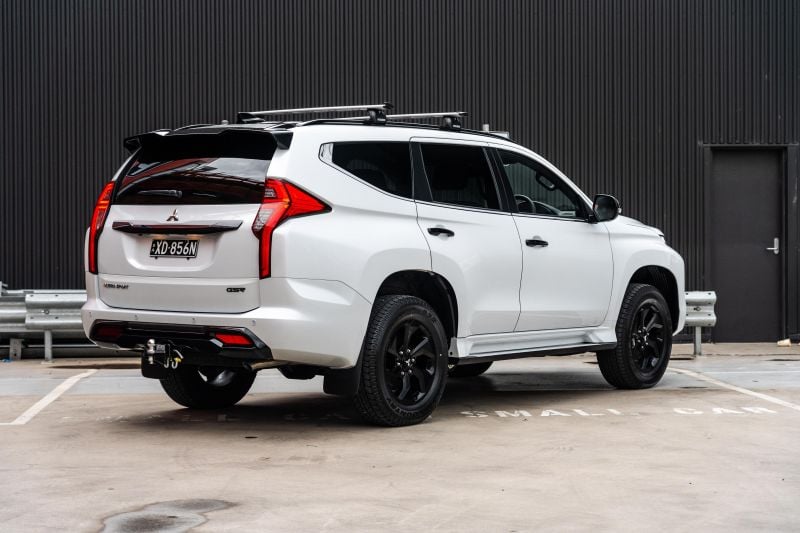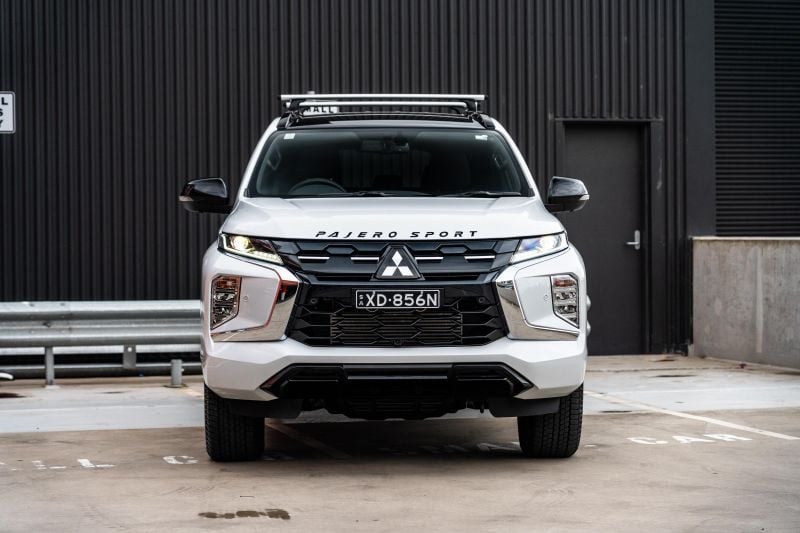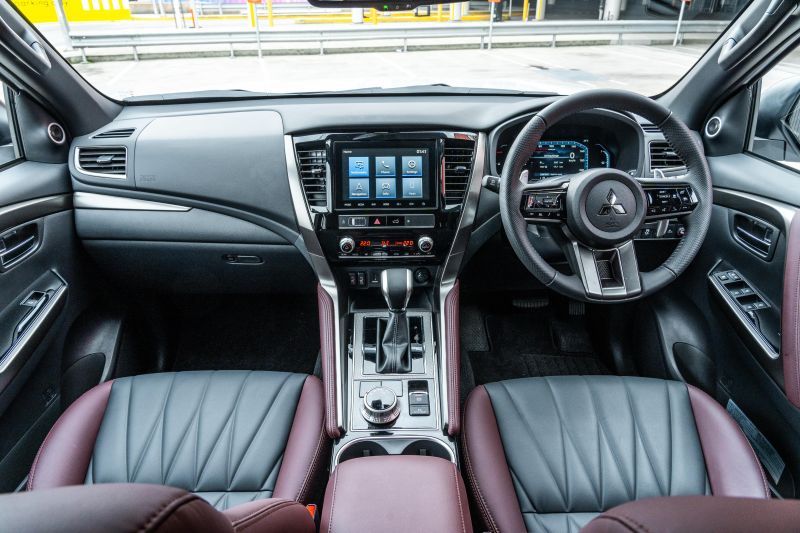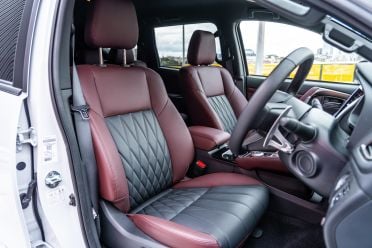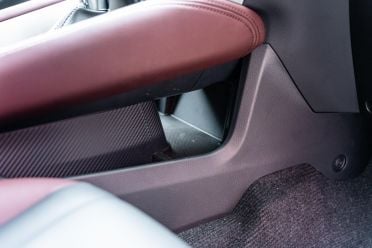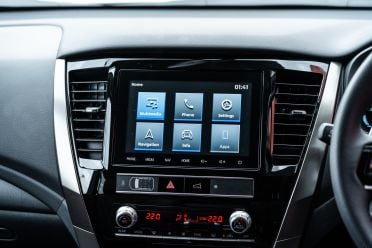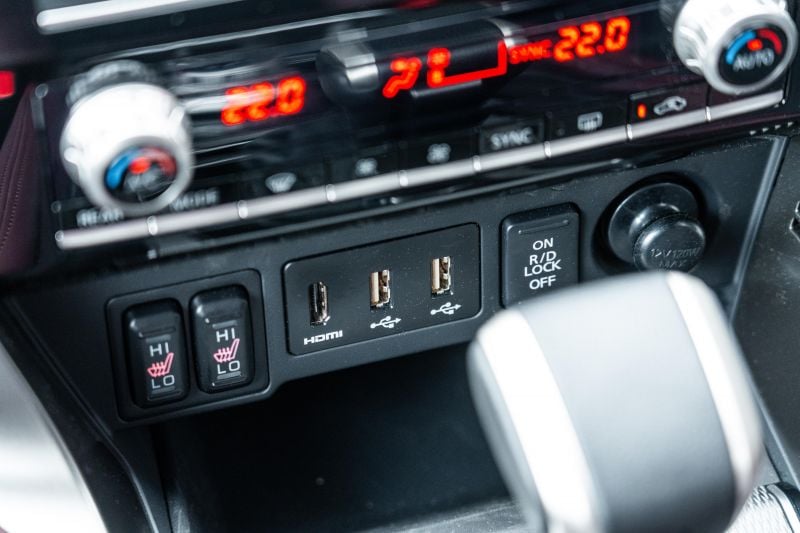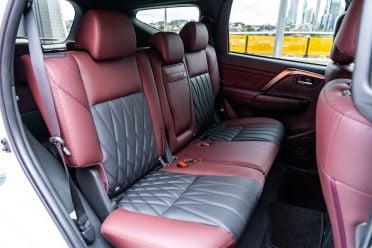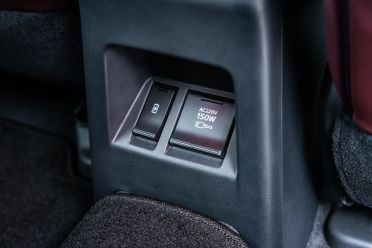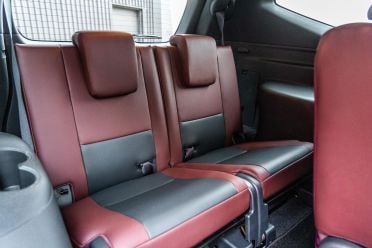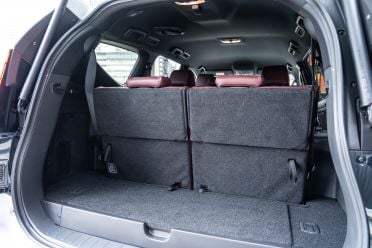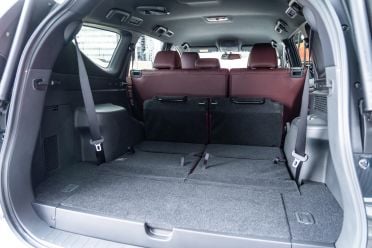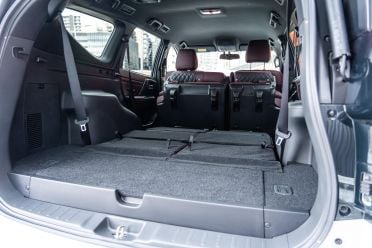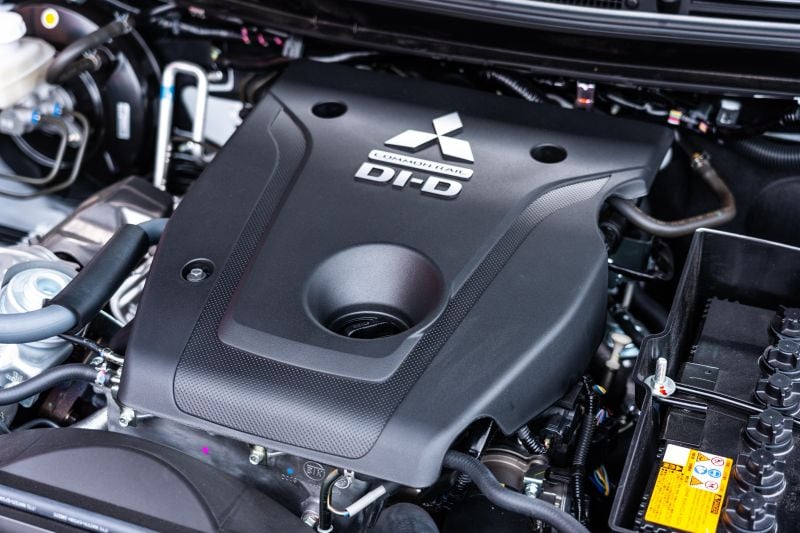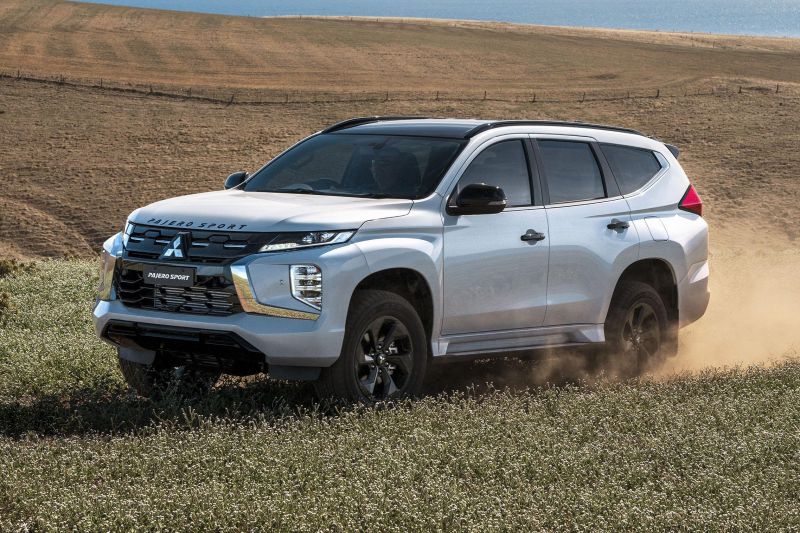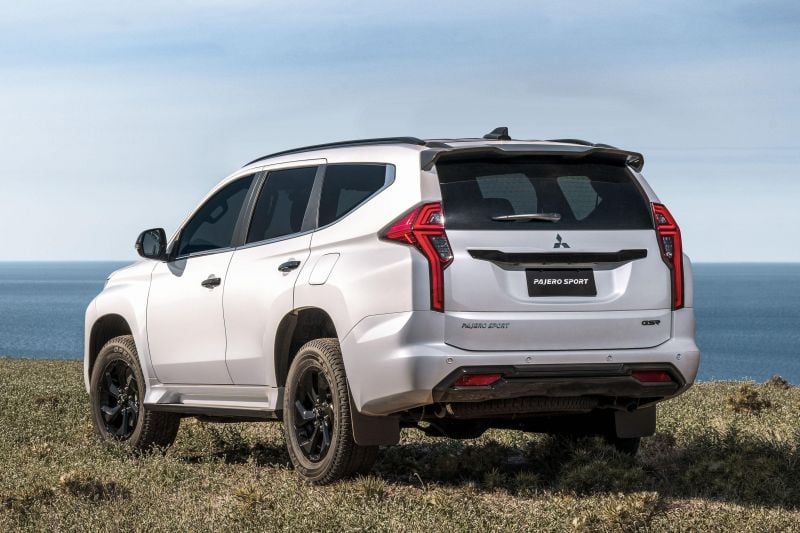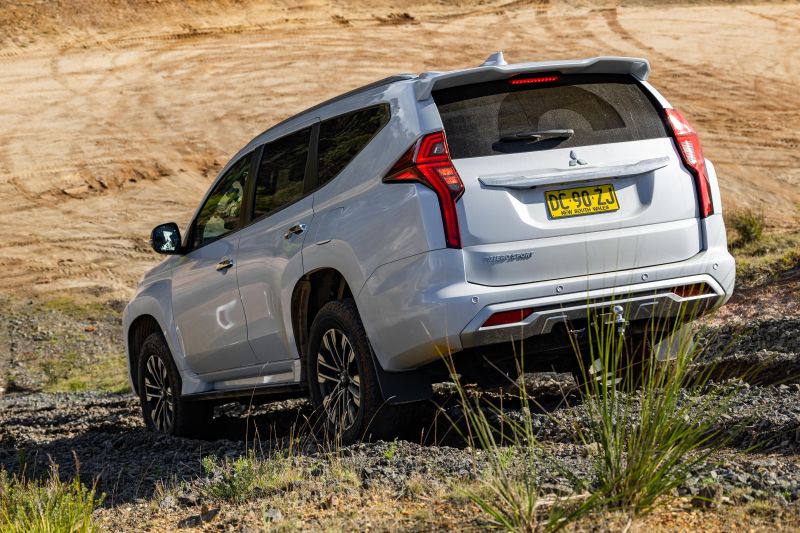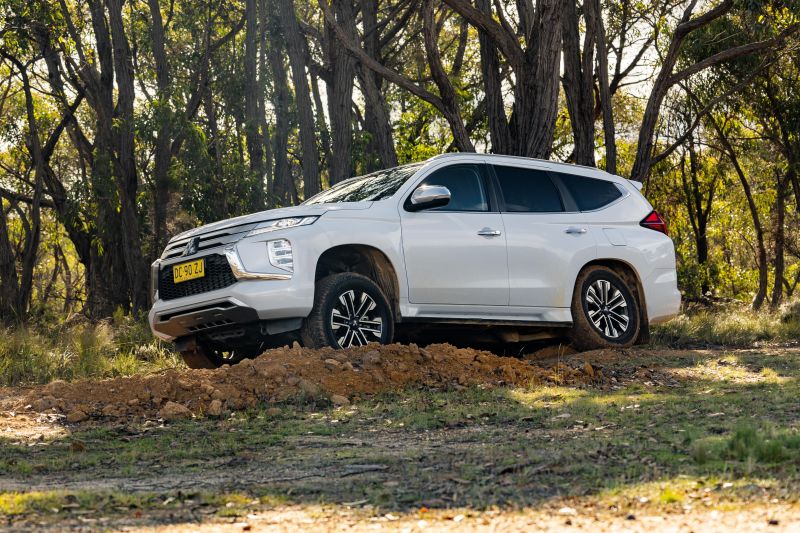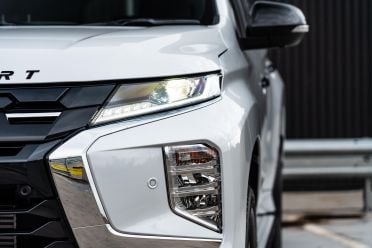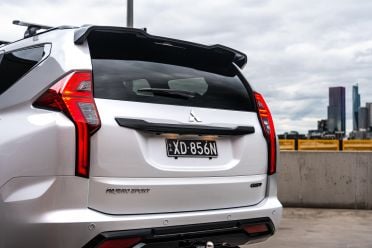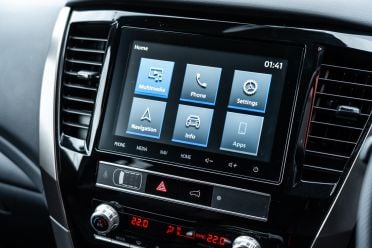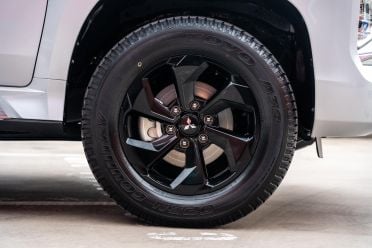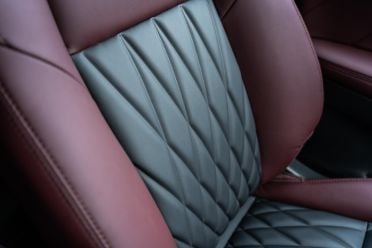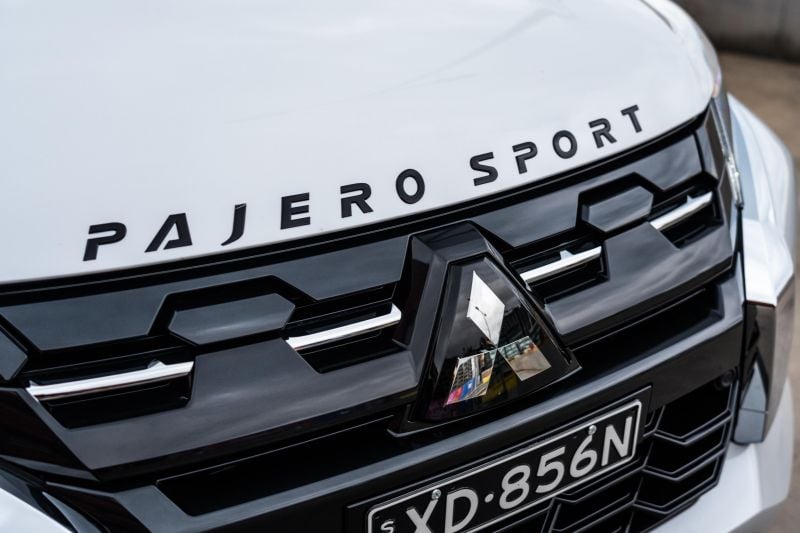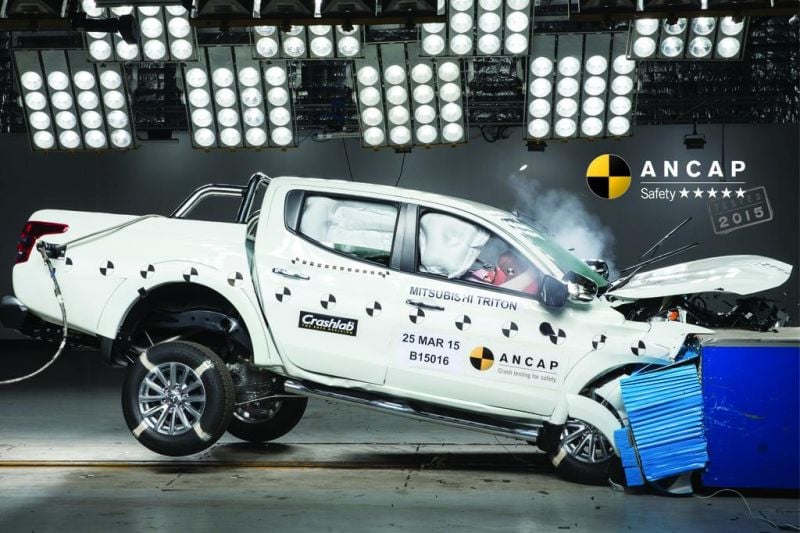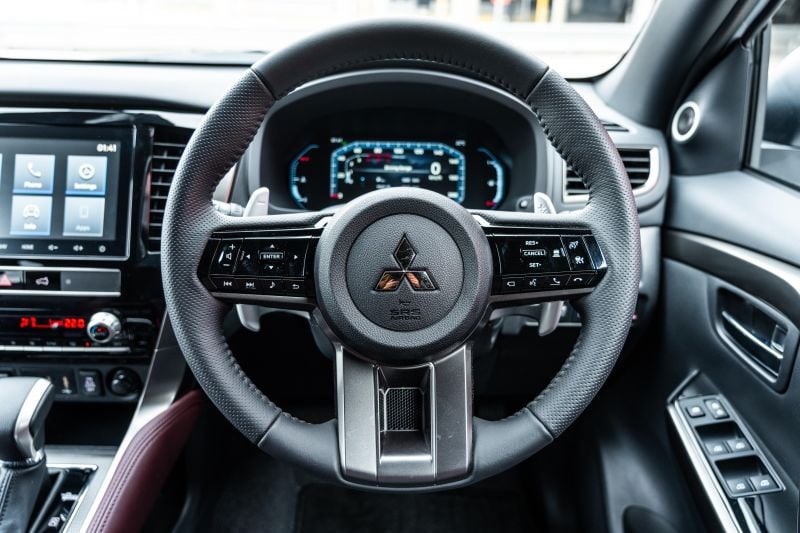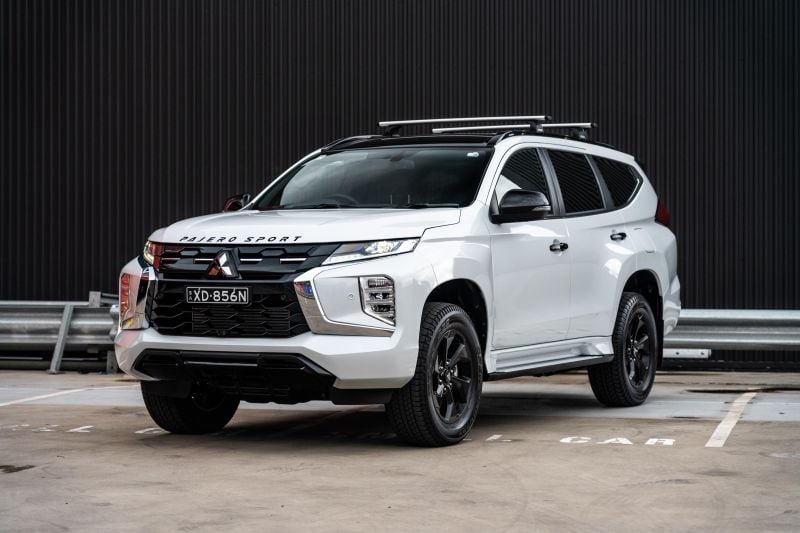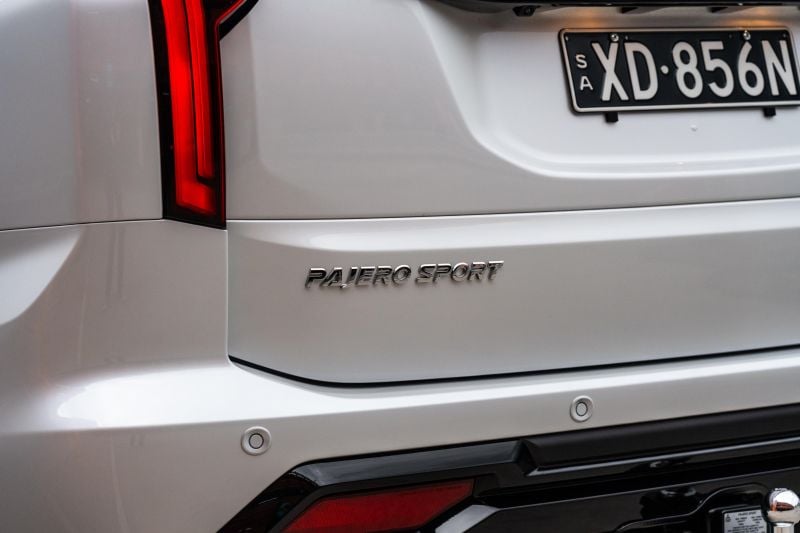The Mitsubishi Triton dual-cab ute recently received an extensive generational overhaul, but it seems the closely related Pajero Sport large off-road SUV won’t be replaced for some time.
The Japanese brand’s rival to the likes of the Ford Everest and Isuzu MU-X has been feeling its age for a while, but this year Mitsubishi gave it only a minor update ahead of an expected replacement in the latter half of this decade.
For 2024-25, the Pajero Sport picks up some very minor design changes on the outside, as well as a new steering wheel nicked from the new Triton on the inside.
The local range also come in for a restructure, with 4×2 models culled and some extra equipment added to the base model to justify the higher entry point. Otherwise, it’s much the same as the vehicle that first debuted way back in 2015.
On test here we have the 2025 Mitsubishi Pajero Sport GSR, the most expensive variant on sale in Australia, priced at just under $65,000 before on-road costs.
WATCH: Paul’s video review of the 2023 Mitsubishi Pajero Sport GSR
That puts the ageing seven-seat wagon up against some very stiff competition. Even a mid-spec Ford Everest offers far newer and more comprehensive technology (not to mention greater refinement) for similar money, and other rivals in the segment offer larger, more powerful turbo-diesel engines with higher towing capacities.
Given the Pajero Sport has long traded on its reputation for value, does this latest iteration command a few dollars too many?

How much does the Mitsubishi Pajero Sport cost?
As noted earlier, the model you see here starts from $64,840 plus on-road costs, or $67,890 drive-away for Victorian buyers at the time of writing.
| Model | Price |
|---|---|
| Mitsubishi Pajero Sport GLX 5-seat | $51,540 (+$1600) |
| Mitsubishi Pajero Sport GLS 7-seat | $56,890 (+$1700) |
| Mitsubishi Pajero Sport Exceed 7-seat | $62,590 (+$1900) |
| Mitsubishi Pajero Sport GSR 7-seat | $64,840 (+$2400) |
To see how the Pajero Sport lines up against the competition, check out our comparison tool
What is the Mitsubishi Pajero Sport like on the inside?
As with the outside, the changes to the MY24’s interior are very minor.
As we noted, there’s a new steering wheel borrowed from the latest Triton, and a revised digital instrument cluster for the higher grades, which I actually like less than the old one.
It retains its 8.0-inch size, though the graphics are more squared off and there’s no virtual tacho dial like there was in the old one – it’s just laid out a little awkwardly.
The new steering wheel is an improvement though, with a sportier, more classic design and nicer multifunction switchgear. In the GSR you also get a new quilted burgundy and black synthetic leather upholstery which is… different.
I’m normally one to celebrate when a manufacturer offers an interior option that isn’t black, but Mitsubishi’s choice of trim here is quite polarising. It might look better inside a black car, but against the bright white paint of our tester, it seemed a little off.
Material quality and the overall ambience is much the same otherwise, with a mix of nicer padded surfaces and plenty of hard wearing plastic, and lashings of fingerprint-attracting and scratch-prone piano black trim.
The display tech is, let’s face it, old hat. Step out of the Pajero Sport and into something like a Ford Everest and you feel every bit of the 10-year age gap, which is a shame given the Renault Nissan Mitsubishi Alliance interface in the Outlander and Triton is a marked improvement in terms of clarity and response, let alone features.
In the GSR, the 8.0-inch touchscreen comes with integrated satellite navigation sourced from TomTom that looks like it came out of one of those portable units from some time ago, but you can counter that with (wired) Apple CarPlay or Android Auto phone mirroring.
Still, it’s slow, low in resolution and just doesn’t look anywhere near as modern or high-end as rival systems like Ford’s excellent Sync 4 unit.
It’s a similar theme throughout the dashboard, with the red-backlit climate controls giving late ’90s or early ’00s vibes, and the toggle switches for the seat heaters are likewise quite old-school.
The bulk of it is still very functional, but the space under the centre stack clearly wasn’t designed for a future with larger phablet smartphones – the placement of the USB ports is also a touch awkward when the vehicle is in Park.
My iPhone 15 Pro Max struggled to fit in there without knocking against the shifter and the lack of a rubberised platform made it prone to slipping out.
Broader storage options are fine, with decent door bins and a cubby under the centre armrest, plus a pair of cupholders behind the rotary 4WD mode selector.
Moving into the rear, other than the new upholstery in the GSR, it’s again more of the same. There’s a good amount of space for adults, and kids will be more than happy back there.
Sturdy grab handles on the B-pillars and side steps make getting in easier, though it’s on the narrower side. The elevated seat height makes head room a bit tight for taller folk like some of my colleagues – though 6’1″ me fits just fine.
Amenities include roof-mounted air vents and grab handles, rear USB ports (four in the cabin all up), and a handy 220V power socket. Plus there are pockets in each seatback and a flip-down armrest with cupholders.
The third row is handy to have for emergencies, but is best suited to kids. The ‘sporty’ exterior design also means the rearmost windows are quite small, meaning that smaller passengers may find them hard to see out of.
The seats do fold down into the floor when not in use but, as the pictures here show, not quite as neatly as in numerous rival SUVs.
The extra seating row does impact boot space. The base five-seat GLX has 673 litres of capacity, whereas with the third row folded the seven-seater only has 502 litres.
With the third row in use this shrinks to 131L, and with both rows folded you get a maximum of 1488L. The boot in five-seater mode measures 1370mm long by 885mm tall, with 1000mm between the wheel-arch covers.
A full-size spare tyre is mounted beneath the vehicle.
| Dimensions | Mitsubishi Pajero Sport GSR |
|---|---|
| Length | 4840mm |
| Width | 1815mm |
| Height | 1835mm |
| Wheelbase | 2800mm |
| Cargo capacity – VDA | 131 litres – to top of 3rd row seat back 502 litres – to top of 2nd row seat back 1488 litres – max capacity to roof, all seats folded |
To see how the Pajero Sport lines up against the competition, check out our comparison tool
What’s under the bonnet?
The Pajero Sport carries over its four-cylinder 2.4-litre single-turbo diesel engine and eight-speed auto, which differs to the new Triton’s twin-turbo oiler and six-speed automatic.
| Specifications | Mitsubishi Pajero Sport GSR |
|---|---|
| Engine | 2.4L 4cyl turbo-diesel |
| Power | 133kW @ 3500rpm |
| Torque | 430Nm @ 2500rpm |
| Transmission | 8-speed auto |
| Driven wheels | 4WD incl. rear diff lock |
| Weight – kerb | 2130kg |
| Fuel economy – claimed | 8.0L/100km |
| Fuel economy – as tested | 9.5L/100km |
| Fuel tank capacity | 68 litres |
| Fuel requirement | Diesel |
| CO2 emissions | 212g/km |
| Emissions standard | Euro 5 |
| Braked tow capacity | 3100kg |
To see how the Pajero Sport lines up against the competition, check out our comparison tool
How does the Mitsubishi Pajero Sport drive?
Not much has changed since I drove the pre-update model late last year.
Being a little older than some of its rivals, the Pajero Sport’s general powertrain refinement isn’t up there with the best in segment. It has a rumbly diesel clatter on start-up and idle, although it’s still not too bad overall.
In normal driving around town, this SUV feels much like most ladder-frame 4x4s today. The controls are heavy, the diesel is lazy, and it lopes around like the big, heavy wagon it is.
That said, the eight-speed auto is pretty good at keeping the turbo-diesel in its torque band, and shifts very smoothly and reliably. That makes it well suited around town, and you rarely feel the need to pull on one of the shift paddles in normal driving.
I spent most of my time commuting to and from the CarExpert Melbourne office during the week, and while it felt like a step back in time, the Pajero Sport is one of the more agreeable off-road SUVs in day-to-day scenarios.
For example, the old MU-X was a shocker to drive on a daily basis, and the previous Everest was a bit clumsy, even if offered nicely damped ride quality.
There’s a bit of noise from the diesel engine under acceleration regardless of the intensity, especially if you’re comparing the Pajero Sport to a car-based SUV like a Kia Sorento. Could be better, but could be worse.
At least performance is pretty responsive and linear, as noted earlier. When stopped, there’s no idle stop/start tech to save fuel and emissions in traffic, so you’re just left with the drone of the diesel clatter in city gridlock – dugdugdug.
But the Pajero Sport starts to show off its strengths on the highway, where the engine and transmission can settle into a quiet cruise. The chassis delivers a more wafty feel rather than the wobbly and at times jittery behaviour it can give you in town, where the long-travel suspension and big wheels crash over tram tracks and potholes.
It’s not a match for the excellent locally-developed Everest, which feels like a luxury SUV at times, but given its age and price point the Pajero Sport does a solid job of touring, and you can see why it has proven popular with adventurous Australian families.
WATCH: 4WD SUV Off-Road Mega Test
We didn’t take the updated Pajero Sport off the beaten track this time, but we observed impressive results during our 4WD SUV Mega Test.
There it performed reasonably well on the hillclimb, rolling back slightly in 2H before the traction control worked things out. But it was very impressive in 4H, moving forward with barely any slip.
Its age showed in the flex test, where the door caught slightly on the body. It wasn’t the worst performer in that test, however. Mitsubishi’s traction control system walked the car out of the moguls with a minimum of fuss, even in the road-oriented 4A four-wheel drive setting. With 4H and Mud Mode engaged, it was even more effortless.
It scaled Mogul Mountain without too much wheel slip, and the hill-descent control kept the car nice and controlled. You can make the car descend faster using the throttle, not via the cruise control buttons as in some rivals.
Rev flaring was noticeable in the Pajero Sport going up Gravel Mountain, but it managed to scale the hill on the second attempt with its rear differential locked.
Driver assistance isn’t a particular strength for the big Mitsubishi, which lags behind key rivals in terms of inclusions.
The standard adaptive cruise control system works reasonably well, but cancels itself at low speeds. It doesn’t feature any form of stop-and-go or traffic jam assist functions like we’re seeing more of in rivals these days.
Likewise, there’s no active lane keeping assistant – or departure warning, for that matter. The Exceed and GSR are the only variants in the range to score blind-spot monitoring and rear cross-traffic alert systems, the former of which can detect a vehicle within 3.5 metres of the Pajero Sport’s side or 70m from the rear bumper.
You also pick up a Multi Around View Monitor in the Exceed and GSR, which is handy for visibility given the size of the vehicle but not the last word in resolution or clarity.
| Off-road dimensions | Mitsubishi Pajero Sport GSR |
|---|---|
| Ground clearance | 218mm |
| Approach angle | 30 degrees |
| Departure angle | 24.2 degrees |
| Ramp breakover angle | 23.1 degrees |
| Wading depth | 700mm |
To see how the Pajero Sport lines up against the competition, check out our comparison tool
What do you get?
The GSR sits at the top of the Pajero Sport lineup in Australia.
Pajero Sport GLX highlights:
- 5 seats
- Revised 18-inch alloy wheels
- Automatic LED headlights (NEW)
- LED fog lights and daytime running lights
- Rain-sensing wipers (NEW)
- Power-folding exterior mirrors
- 8.0-inch touchscreen infotainment system
- Apple CarPlay and Android Auto – wired
- DAB digital radio
- Paddle shifters
- Electronic parking brake
- Adjustable speed limiter
- Keyless entry and start
- Three-spoke leather-wrapped steering wheel (NEW)
- Tilt and telescopic steering wheel adjustment
- Climate control air-conditioning
- Black cloth upholstery
- 4-speaker sound system
Pajero Sport GLS adds:
- 7 seats
- 18-inch two-tone alloy wheels
- Dual-zone climate control
- 6-speaker sound system
- Tyre pressure monitoring
- Automatic headlights
- Rain-sensing wipers
- Rear floor storage box
- Privacy glass
- Power tailgate
Pajero Sport Exceed adds:
- Leather upholstery
- Power-adjustable front seats
- Heated front seats
- Power front seats
- Remote app connectivity
- 8-speaker premium audio
- 8.0-inch LCD instrument cluster
- incl. updated graphics (NEW)
Pajero Sport GSR adds:
- 18-inch black alloy wheels
- Black exterior accents
- Roof
- Bumper garnishes
- Headlight garnish
- Rear spoiler
- Grille
- Synthetic leather upholstery (NEW)
- Burgundy/Black
- Diamond-pattern quilting
- Dark Titanium interior accents
To see how the Pajero Sport lines up against the competition, check out our comparison tool
Options
Deluxe Package: $2500 (GLS)
- Surround-view camera
- Leather upholstery
- Power front seats
Colours
There are 10 colour combinations available across the 2024 Mitsubishi Pajero Sport lineup, including the new Blade Silver Metallic and a Graphite Grey hue with black roof.
| Colour | GLX | GLS | Exceed | GSR |
|---|---|---|---|---|
| White (solid) | Yes | Yes | Yes | No |
| Blade Silver (metallic, NEW) | Yes | Yes | Yes | No |
| Graphite Grey (metallic) | Yes | Yes | Yes | No |
| Terra Rossa (pearlescent) | Yes | Yes | Yes | No |
| Black Mica (pearlescent) | No | Yes | Yes | Yes |
| Impulse Blue (metallic) | No | Yes | Yes | No |
| White Diamond (prestige) | No | Yes | Yes | No |
| White Diamond with Black roof | No | No | No | Yes |
| Terra Rossa with Black roof | No | No | No | Yes |
| Graphite Grey with Black roof (NEW) | No | No | No | Yes |
Is the Mitsubishi Pajero Sport safe?
The Pajero Sport received a five-star ANCAP safety rating back in 2015, though the rating is now expired. It’s worth noting the rating was also based on tests of the previous-generation Triton ute.
It included a frontal offset crash test score of 15.22 out of 16 and a side impact score of 16 out of 16. Whiplash and pedestrian protection were rated Good and Acceptable, respectively.
Standard safety features include:
- 7 airbags incl. driver’s knee
- Autonomous emergency braking (AEB)
- Adaptive cruise control
- Rear parking sensors
- Reversing camera
Pajero Sport Exceed adds:
- Blind-spot monitoring
- Rear cross-traffic alert
- Surround-view cameras
To see how the Pajero Sport lines up against the competition, check out our comparison tool
How much does the Mitsubishi Pajero Sport cost to run?
Mitsubishi’s standard warranty covers five years or 100,000km of driving, but you can extend this to 10 years or 200,000km if you service with an authorised Mitsubishi dealer.
| Running costs | Mitsubishi Pajero Sport |
|---|---|
| Warranty | 5 years or 100,000 kilometres – standard 10 years or 200,000 kilometres – service activated |
| Roadside assistance | 1 year – standard 5 years – service activated |
| Service intervals | 12 months or 15,000 kilometres |
| Capped-price servicing | Up to 10 years or 15,000 kilometres |
| Total capped-price service cost | $2895 – 5 years $7490 – 10 years |
To see how the Pajero Sport lines up against the competition, check out our comparison tool
CarExpert’s Take on the Mitsubishi Pajero Sport
Despite some cosmetic changes, the flagship Pajero Sport isn’t all that different – but is more expensive and arguably less competitive than it was even six to 12 months ago.
While generally competent and agreeable to drive in daily scenarios, the Pajero Sport is really starting to fall behind the pack of newer and more sophisticated rivals that offer better tech and refinement for similar or even less money.
This Mitsubishi has been feeling dated for a while, and the latest Everest continues to dominate this segment for good reason. And with an Isuzu MU-X update looming – and the new-gen Triton showing off its own developments – the Pajero Sport is feeling almost ancient as we approach 2025.
All that aside, at its core Mitsubishi’s biggest SUV is a rugged, no-nonsense seven-seat adventure machine that has built a legion of loyal fans, even if it can’t tow the hallowed 3500kg. The 10-year conditional warranty also sweetens the deal as a point of difference.
For the longest time the Pajero Sport has traded on value and off-road ability. You can still get both, by avoiding higher-spec variants. Save yourself $10,000 and get a GLX, which in my opinion is the sweet spot of the range.
Interested in buying a Mitsubishi Pajero Sport? Get in touch with one of CarExpert’s trusted dealers here
Click the images for the full gallery





